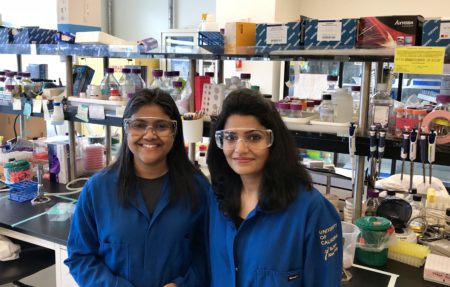Kothari A, Wu Y-W, Charrier M, Rajeev L, Rocha AM, Paradis CJ, Hazen TC, Singer SW, Mukhopadhyay A. (2019) Large Circular Plasmids from Groundwater Plasmidomes Span Multiple Incompatibility Groups and Are Enriched in Multimetal Resistance Genes. mBio. [doi]:1128/mBio.02899-18
ENIGMA runs an internal proposal call to encourage early-career scientists to develop risky and interesting ideas that may contribute to our ongoing mission or changing direction by providing new data or tools. Here Ankita Kothari successfully managed a Discovery proposal from pitching the idea, developing the project to publication. This work was recently showcased at the national level by DOE

Bacteria often contain mobile genetic elements called plasmids that are circular DNA molecules that confer advantageous traits to the host and are capable of being horizontally transferred between different microbes. Studying the entire plasmid content (plasmidome) of a site can thus provide insights into genes that provide a selective advantage to a bacterial community. To study the incidence, diversity, and distribution of plasmids in groundwater along with exploring their role in environmental stress adaptation, we came up with the idea of exploring the plasmidome of the Oak Ridge Field Research Site. This Discovery proposal was risky because the existing plasmidome studies were limited to environments with high cell density. In contrast, at ENIGMA we focused on a challenging Department of Energy site characterized by low cell density and fluctuating populations. We developed and optimized methods to work with this environment and were successful in identifying over 600 different plasmids including several large plasmids that showed enrichment in metal tolerance genes in addition to antibiotic- and virus-resistance genes. Collaborations within ENIGMA helped to provide resources for environmental sampling, groundwater metal composition analysis, and sequence data analysis via KBase. This project now contributes to the 1) ENSuRC campaign since it continues to identify novel mobile genetic elements and accidentally discovered novel viruses along with 2) environmental ark campaign where the plasmids are being used to develop genetic tools to modify novel bacteria.
